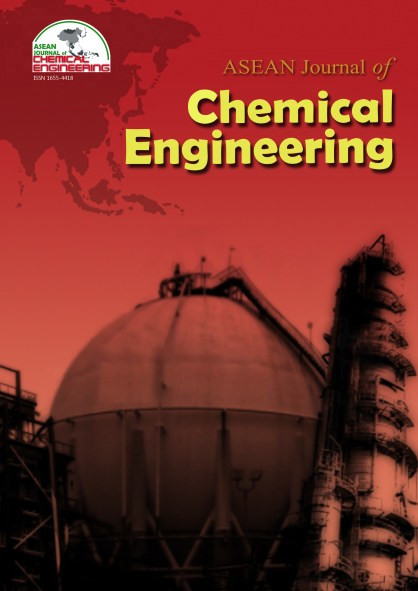Mechanical and Thermal Properties of Geopolymers from Mixtures of Coal Ash and Rice Hull Ash using Water Glass Solution as Activator
Abstract
Geopolymers, from industrial wastes such as blast furnace slag, red mud, and coal ash, among others, have emerged as technically viable, economically competitive, and environmentally attractive supplements and even alternatives to ordinary Portland cement (OPC). Furthermore, while the most impact shall be achieved with large-scale use in the general building and structural sector, as replacement or supplement to OPC, the properties of these geopolymers may be optimized for special niche applications. One of these applications is for light weight, low thermal conductivity, heat resistant, and moderate strength cement binder for low rise residential buildings. In this study, compressive strength, heat resistance, volumetric weight, mass loss, water absorption and thermal conductivity of geopolymers formed from mixtures of coal bottom ash and rice hull ash (CBA-RHA) and coal fly ash and rice hull ash (CFA-RHA) with sodium silicate solution (modulus 2.5) as activator were evaluated. Using mixture design and the JMP statistical software, the CBA-RHA combination at a mass ratio of 46% CBA, 32% RHA with 22% WGS gave properties at maximum desirability of 17.6 MPa compressive strength, 1640 kg/m3 volumetric weight, 273 kg/m3 water absorption, 28 MPa compressive strength after high temperature exposure (1000oC for 2 hours) with 4.4% mass loss, and 0.578 W/m-K thermal conductivity. On a performance basis, even as the geopolymers are formed as paste, these properties fall within the standards for lightweight OPC based-concrete with strength requirements for residential buildings. The low thermal conductivity and higher strength after high temperature exposure vis-à-vis OPC are additional advantages for consideration.
References
2. Alvarez-Ayuso, E., Querol, X., Plana, F., Alastuey, A., Moreno, N.,Izquierdo, M., Font, O., Moreno, T., Diez, S., Vazquez, E., and Barra,M. (2008). Environmental, Physical and Structural Characterisation of Geopolymer Matrixes Synthesised from Coal (Co-) Combustion Fly Ashes. Journal of Hazardous Materials, 154 (1-3), 2008, 175-183
3. ASTM C90-14, Standard Specification for Loadbearing Concrete Masonry Units, ASTM International, West Conshohocken, PA, 2014, www.astm.org
4. Davidovits, J. (1994). Geopolymers: Man-made Rock Geosynthesis and the Resulting Development of Very Early High Strength Cement. Journal of Materials Education, 16, 1994, 91-139
5. Davidovits, J. (2002). 30 Years of Successes and Failures in Geopolymer Applications. Market Trends and Potential Breakthroughs. Proceedings Geopolymer 2002 Conference, Melbourne, Australia, 2002.
6. Davidovits, J. (2011). Geopolymer chemistry and applications. 3rd ed. France, Institut Géopolymère, 2011.
7. Duxson, P., Fernandez-Jimenez, A., Provis, J., Lukey, G., Palomo, A., and van Devanter J. (2007). Geopolymer Technology: The Current State of Art. Journal of Materials Science, 42, 2007, 2917-2933.
8. Juenger, M., Winnefeld, F., Provis, J. and Ideker, J. (2011). Advances in Alternative Cementitious Binders, Cement and Concrete Research, 41, 2011, 1232–1243
9. Khale, D. and Chaudhary, R. (2007). Mechanism of Geopolymerization and Factors Influencing Its Development: A Review. Journal of Materials Science, 42, 2007, 729–746
10. Mellado, A., Catal ́an, C., Bouz ́on, N., Borrachero, M.V. , Monz ́o, J.M. and Pay ́a, J. (2014). Carbon Footprint of Geopolymeric Mortar: Study of the Contribution of the Alkaline Activating solution and Assessment of an Alternative Route, Royal Society of Chemistry Advances, 4, 2014, 23846– 23852
11. Part Wei Ken, Ramli, M., and Cheah Chee Ban (2015). An Overview on the Influence of Various Factors on the Properties of Geopolymer Concrete Derived from Industrial By-Products, Construction and Building Materials 77, 2015, 370–395
12. Petermann, J., Saeed, A., and Hammons, M. (2012). Alkali-Activated Geopolymers: A Literature Review. 2010, unpublished, Distribution approved for public release; distribution unlimited. 88ABW-2012- 2030, 6 February 2012
13. Provis, J.L. and van Deventer, J.S.J. (eds.). (2014). Alkali activated materials: state of the art report. RILEM-TC244 AAM. Springer Netherlands, 2014.
14. Suhendro, B. (2014). Toward Green Concrete for Better Sustainable Environment, Proceedings 2nd International Conference on Sustainable Civil Engineering Structures and Construction Materials 2014 (SCESCM 2014), Procedia Engineering 95,2014, 305 – 320
15. World Crude Oil Consumption, Index Mundi, Available online at http://www.indexmundi.com/energy.as px
16. World Rice Statistics, International Rice Research Institute, available online at http://ricestat.irri.org:8080/wrs2/entryp oint.htm
Copyright holder for articles is ASEAN Journal of Chemical Engineering. Articles published in ASEAN J. Chem. Eng. are distributed under a Creative Commons Attribution-NonCommercial 4.0 International (CC BY-NC 4.0) license.
Authors agree to transfer all copyright rights in and to the above work to the ASEAN Journal of Chemical Engineering Editorial Board so that the Editorial Board shall have the right to publish the work for non-profit use in any media or form. In return, authors retain: (1) all proprietary rights other than copyright; (2) re-use of all or part of the above paper in their other work; (3) right to reproduce or authorize others to reproduce the above paper for authors’ personal use or for company use if the source and the journal copyright notice is indicated, and if the reproduction is not made for the purpose of sale.



